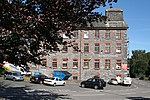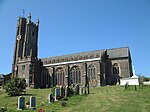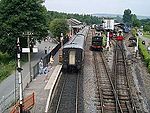Rattery

Rattery is a village and civil parish in the South Hams district, in the county of Devon, England, a few miles from the villages Buckfastleigh and neighbouring village Ashburton the name can sometime be seen a variant of Red Tree but is mentioned in the Domesday Book as Ratreu. The origins of how it got its name remain unknown but had been many possibles answer put across. In 2001 the parish had a population of 458. The History Of St Mary's Church The Vicars Of St Mary's 1. Jeffery Hurning: approx. 1199 2. Walter De Pembroke Approx. 1238 3. Thomas Ballard Approx. 1260-1284 4. Walter Culliebole Approx. 1284-1338 5. John Lambrith Approx. 1338-1349 6. William Budd Approx. 1349-1354 7. Ralph Pataleke Approx. 1354-1364 8. Thomas De Northwode Approx. 1364-1364 9. William Blackhall Approx.1364-1376 10.Lawrence Buscoveleke Approx. 1376-1391 The village is part of the electoral ward of Eastmoor. The ward population at the 2011 census was 2,321.
Excerpt from the Wikipedia article Rattery (License: CC BY-SA 3.0, Authors, Images).Rattery
Culver Lane, South Hams Rattery
Geographical coordinates (GPS) Address Nearby Places Show on map
Geographical coordinates (GPS)
| Latitude | Longitude |
|---|---|
| N 50.433333333333 ° | E -3.7666666666667 ° |
Address
Culver Lane
Culver Lane
TQ10 9LJ South Hams, Rattery
England, United Kingdom
Open on Google Maps










